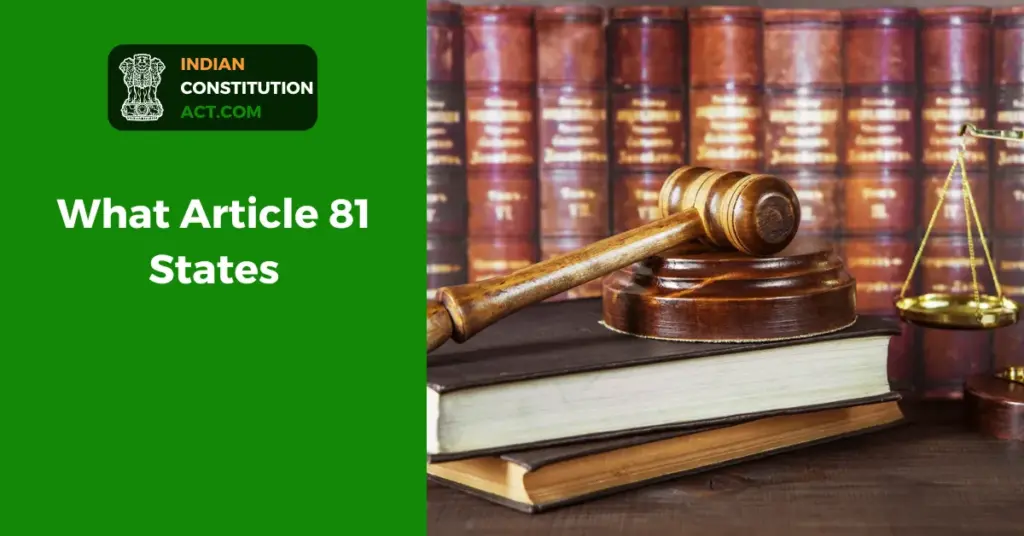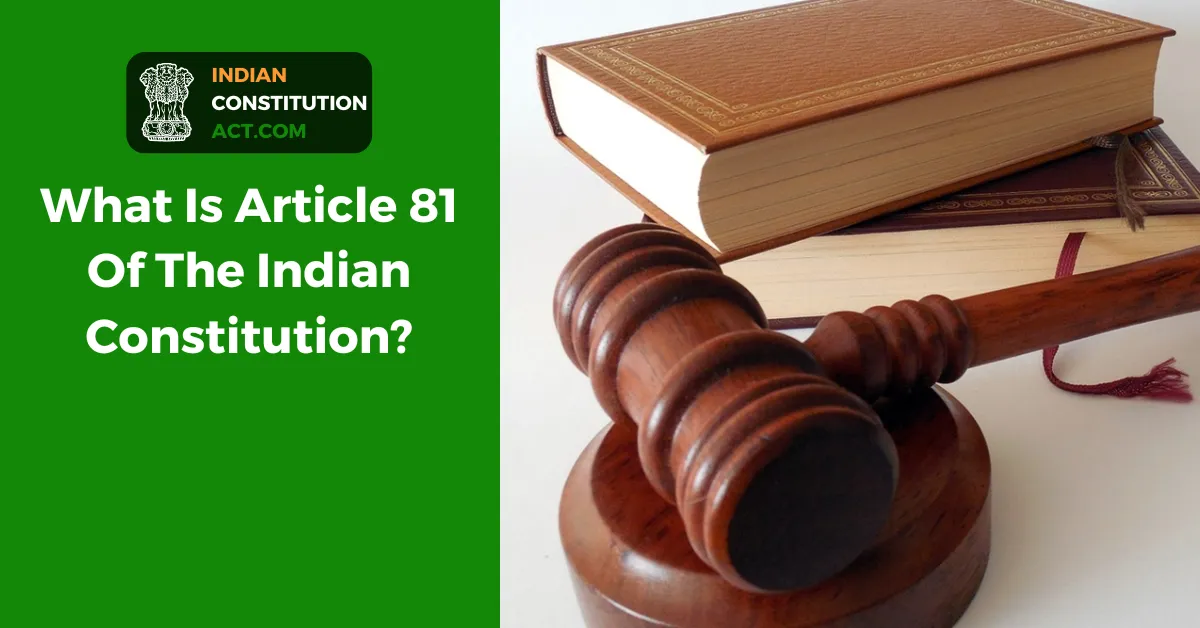What is the House of the People, this term is used for the chamber of the government where capable candidates are elected as members of the house. It is also known as the lower house of the parliament in various countries but in India, it is known as Lok Sabha. Article 81 of the Indian Constitution states how many members the Lok Sabha will have and how they will be constituted. Read every line of this blog post carefully because if you skip even one line then you will have difficulty understanding article 81.
Table of Contents
Article 81 Of The Indian Constitution In Simple Words
Article 81 of the Indian Constitution states how many members the Lok Sabha will have and how they will be constituted. This article has several clauses, the first clause says that:
a. There will be 530 members in the Lok Sabha, not more than that, who will be directly elected by the general public and they will come from the states.
b. The second part of clause 1 says that the 20 MPs will be directly elected by the voters and will come from the Union Territory.
In this article, it is also told how much population will one MP work for. This law has been made because there are fewer MPs and more people. Therefore, it is decided that for how many people one MP will work. For example, Let us assume that 1 MP will handle a 10 lakh population, now let us assume that there are 1 crore people in Bihar. So there will be 10 MPs there.
What Article 81 States

Clause 1: Subject to the provisions of Article 331, the House of the People shall consist of:
a. Not more than five hundred and thirty members chosen by direct election from territorial constituencies in the States, and
b. Not more than twenty members to represent the Union territories, chosen in such manner as Parliament may by law provide.
Also read: Article 80 Of The Indian Constitution Explained In Simple Words
Clause 2: For the purposes of sub-clause (a) of clause (1);
a. There shall be allotted to each State a number of seats in the House of the People in such manner that the ratio between that number and the population of the State is, so far as practicable, the same for all States; and
b, Each State shall be divided into territorial constituencies in such manner that the ratio between the population of each constituency and the number of seats allotted to it is, so far as practicable, the same throughout the State:
Provided that the provisions of sub-clause (a) of this clause shall not be applicable for the purpose
of allotment of seats in the House of the People to any State so long as the population of that State does
not exceed six millions.
Clause 3: In this article, the expression “population” means the population as ascertained at the last preceding census of which the relevant figures have been published:
Provided that the reference in this clause to the last preceding census of which the relevant figures have been published shall, until the relevant figures for the first census taken after the year 2026 have been published, be construed;
a. For the purposes of sub-clause (a) of clause (2) and the proviso to that clause, as a reference to
the 1971 census; andb. For the purposes of sub-clause (b) of clause (2) as a reference to the 2001 census.
That’s all in today’s blog, if you want any further information about Article 81 of the Indian Constitution then you can ask us by commenting in the comment section. We will help you in that as soon as possible.
